Freight Shipping between Thailand and Portugal | Rates – Transit times – Duties and Taxes
Shipping goods from Thailand to Portugal can feel more complicated than Bangkok’s rush hour. Many businesses get tripped up by costs, transit times, and the maze of customs regulations. This guide is here to simplify things, breaking down freight rates, delivery times, and the customs process between Thailand and Portugal. We’ll walk you through the best options for air, sea, road, and rail transport, along with insights into customs duties, taxes, and practical tips specifically for businesses. If it all seems like too much, DocShipper is here to help. As a trusted international freight forwarder, we take care of the details, making the whole process smooth and hassle-free for your business.
Which are the different modes of transportation between Thailand and Portugal?
Just like choosing the quickest route on a road trip, picking the optimal shipping method between Thailand and Portugal is not a straight path. Ride with us through this complex labyrinth of choices. Like a game of chess, your move will depend on your unique shipping game plan - faster air transport or economical sea freight? Environmental features, such as vast landmasses and seas, can rule out road and rail. So buckle up as we delve into and decode the most practical, cost, and time efficient ways to ship your cargo from the exotic East to the adventurous West.
Need help with your shipment?
Need assistance with your shipment? Dont hesitate to contact us even for a simple question. Choose the option that suits you
Live chat with an expert Chat on WhatsApp Free Quote 24hHow can Siam Shipping help you

Sea freight between Thailand and Portugal
Diving headfirst into the world of ocean shipping between Thailand and Portugal feels like embarking on a thrilling high seas adventure. With strong trade ties connecting bustling hubs like Bangkok and Lisbon, sea freight presents a cost-effective avenue for businesses moving mounds of goods. Think of it like filling a pantry ahead of winter: you might move slower with a full cart, but the savings at checkout can be substantial. Essential ports, Leam Chabang in Thailand and Sines in Portugal, act like the world’s supermarket car-park, linking major industrial centers.
However, don’t be fooled into thinking it’s all smooth sailing. Successfully steering through the choppy waters of international shipping can feel like navigating a labyrinth at night. Navigating complex customs protocols, language barriers, and diverse legislative landscapes often leads businesses into a whirlpool of mistakes. But fear not, we’re here to shine a light on those essential practices and specifications that convert these intricate knots into a straightened rope. Our forthcoming sections will arm you with the map to make your voyage smoother. So, anchors aweigh, captains! Let’s conquer those shipping pains together.
Main shipping ports in Thailand
Location and Volume: Situated in the Chonburi Province, the Laem Chabang Port is a crucial component for the high volume of trade in Thailand due to its proximity to the country’s industrial regions. It handles more than 8 million TEUs annually.
Key Trading Partners and Strategic Importance: Major trading partners include China, Japan, and the United States. Its strategic location makes it a crucial gateway for goods entering the South East Asian market.
Context for Businesses: If you’re considering market expansion in the ASEAN region, Laem Chabang Port’s proximity to key industrial areas and its ability to handle large shipping volumes could offer significant value to your supply chain.
Location and Volume: Bangkok Port, previously serving as Thailand’s central maritime port, is located on the Chao Phraya River. It handles around 1.5 million TEUs per year.
Key Trading Partners and Strategic Importance: Major trading partners consist of the United States, China, and Japan. Its location in the country’s capital city enhances its trade influence.
Context for Businesses: For businesses prioritizing direct access to Thailand’s bustling capital, Bangkok Port could be an ideal component in your shipping strategy with its well-established transport network.
Map Ta Phut Port:
Location and Volume: Map Ta Phut Port, located in Rayong Province, handles around 30 million tons of freight annually, primarily focusing on industrial products.
Key Trading Partners and Strategic Importance: Main trading partners include the ASEAN countries, China and Japan. As the largest industrial port in Thailand, it plays a vital role in the export of petrochemical products.
Context for Businesses: If your business deals with industrial goods and petroleum products, Map Ta Phut Port’s specialized facilities are tailored to handle such cargoes, which could optimize your logistical processes.
Main shipping ports in Thailand
Location and Volume: Situated in the Chonburi Province, the Laem Chabang Port is a crucial component for the high volume of trade in Thailand due to its proximity to the country’s industrial regions. It handles more than 8 million TEUs annually.
Key Trading Partners and Strategic Importance: Major trading partners include China, Japan, and the United States. Its strategic location makes it a crucial gateway for goods entering the South East Asian market.
Context for Businesses: If you’re considering market expansion in the ASEAN region, Laem Chabang Port’s proximity to key industrial areas and its ability to handle large shipping volumes could offer significant value to your supply chain.
Location and Volume: Bangkok Port, previously serving as Thailand’s central maritime port, is located on the Chao Phraya River. It handles around 1.5 million TEUs per year.
Key Trading Partners and Strategic Importance: Major trading partners consist of the United States, China, and Japan. Its location in the country’s capital city enhances its trade influence.
Context for Businesses: For businesses prioritizing direct access to Thailand’s bustling capital, Bangkok Port could be an ideal component in your shipping strategy with its well-established transport network.
Location and Volume: Map Ta Phut Port, located in Rayong Province, handles around 30 million tons of freight annually, primarily focusing on industrial products.
Key Trading Partners and Strategic Importance: Main trading partners include the ASEAN countries, China and Japan. As the largest industrial port in Thailand, it plays a vital role in the export of petrochemical products.
Context for Businesses: If your business deals with industrial goods and petroleum products, Map Ta Phut Port’s specialized facilities are tailored to handle such cargoes, which could optimize your logistical processes.
Main shipping ports in Portugal
Location and Volume: Located in the northern region of Portugal near Porto, the Port of Leixões plays a crucial role in the trade activities with an annual shipping volume of over 15 million tons.
Key Trading Partners and Strategic Importance: This port has major trading connections with Spain, France, Italy, and North America. Its strategic importance lies in serving as a central gateway for automotive, chemical, and food & beverage industries in Portugal.
Context for Businesses: If you’re seeking to target the Western European markets or diversify into the automotive or chemical segments, this port may be vital in optimizing your supply chain due to its extensive connectivity and specialized handling capabilities.
Location and Volume: Situated along Portugal’s central west coast, the Port of Lisbon manages about 11.7 million tons of cargo annually.
Key Trading Partners and Strategic Importance: With a comprehensive trading network including Britain, Spain, France, and Germany, this port stands as a key player in bulk, general and containerized cargoes.
Context for Businesses: Should your enterprise wish to establish a strong foothold in Europe’s vibrant economies or venture into bulk commodities, the Port of Lisboa’s strategic location and diverse capabilities should be a cornerstone of your shipping strategy.
Location and Volume: Found on Portugal’s southwest coast, the Port of Sines is a deep-water port offering unrestricted navigation. It sees an impressive shipping volume of approximately 50 million tons per year, making it Portugal’s busiest port.
Key Trading Partners and Strategic Importance: Its connections span across South America, North America, Africa, and Asia, particularly standing out as a critical hub for liquid bulk petroleum products and dry bulk commodities.
Context for Businesses: If your business is into the energy sector or deals in bulk commodities, the Port of Sines offers excellent access to a variety of markets with its large-scale handling facilities and well-established trade routes.
Port of Setúbal
Location and Volume: Located in the southern region of Lisbon, the Port of Setúbal has an annual handling volume of about 7.5 million tons.
Key Trading Partners and Strategic Importance: Notably, this port has robust trade links with Spain, France, and Germany. It plays a significant role in handling general cargoes, including wood and paper cargoes.
Context for Businesses: For entities dealing with forest products or aiming to penetrate Central European markets, the Port of Setúbal could be a pivotal piece in your logistics plan. Its proficiency in handling specialized cargo provides a distinct advantage.
Location and Volume: Situated in the northernmost part of Portugal, Viana do Castelo Port handles around 6 million tons of cargo every year.
Key Trading Partners and Strategic Importance: Trading primarily with Spain, Germany, and France, this port is a key facilitator of goods within the forestry and agricultural sectors.
Context for Businesses: If your business specializes in forest products or agricultural commodities and targets the European markets, the strategic positioning and specialization of the Viana do Castelo Port can provide a competitive edge in your shipping operations.
Location and Volume: Found in central Portugal, the Port of Aveiro commands a shipping volume close to 4 million tons annually.
Key Trading Partners and Strategic Importance: It boasts strong trading ties with France, Spain, and Germany and primarily handles bulk goods, including mineral coal, cereals, and cement.
Context for Businesses: If your business is involved in the construction, energy or food industry, the Port of Aveiro’s bulk handling capabilities and strong European connectivities can substantially enhance your supply chain’s efficiency.
Should I choose FCL or LCL when shipping between Thailand and Portugal?
Choosing sea freight between Thailand and Portugal? You’re faced with a decision: Should you opt for Full Container Load (FCL) or Less than Container Load (LCL), otherwise known as consolidation? This choice may seem trivial, but it’s highly strategic. Both options have implications for the cost, transit time, and overall efficiency of your shipping operation. By grasping these differences, you’ll be placed to make a well-informed decision fitting your unique shipping requirements and budget. Let’s dive into the intricacies of FCL and LCL, so you can start shipping smartly.
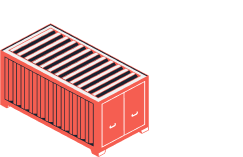
Full container load (FCL)
Definition: In FCL shipping, also known as Full Container Load, a single shipper rents an entire shipping container - 20'ft or 40'ft - for their exclusive use. Your goods fill the whole FCL container and stay sealed inside from Thailand to Portugal. When to Use: FCL serves best when your cargo book up more than around 15 CBM. This route offers a cost-effective solution for high volume shipments and provides increased security as your goods are sealed from origin to destination. Example: Let's say, if a Thai furniture manufacturer is dispatching a bulk order of wooden chairs totaling 16 CBM, an FCL shipment would be the smartest choice. The entire stock can be securely shipped in a 20'ft container, arriving safely at the buyer's warehouse in Portugal. Cost Implications: Higher volume directly leads to lower costs per unit. The fcl shipping quote is more predictable and stable than LCL. You pay a set fee for the container, regardless of whether it's fully loaded or not. An FCL shipment advisor can help you calculate the costs and understand any potential savings.
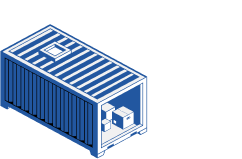
Less container load (LCL)
Definition:
Less than Container Load (LCL) shipping involves consolidating multiple shipments from different businesses to fill a single shipping container. It is ideal when dealing with LCL shipments that aren't large enough to fill a standard 20-foot container.
When to Use:
LCL freight is recommended when your cargo is less than 13-15 cubic meters (CBM). This option provides flexibility especially if you're dealing with low volume freight, giving you the advantage of shipping goods promptly without waiting to fill a whole container.
Example:
For instance, a business in Thailand producing custom-made ceramics, due to fluctuating order quantities, often has cargo sizes that range from 8-12 CBM. By choosing LCL consolidation, the business is able to ship their products regularly on a monthly basis to their customers in Portugal, without delays and high storage costs.
Cost Implications:
Selecting LCL can save cost for smaller shipments as you only pay for the CBM you occupy within the container. However, it's important to remember that LCL freight may incorporate additional handling charges at both the origin and destination ports.
Hassle-free shipping
As a trusted freight forwarder, DocShipper removes complications from cargo shipping. Managing your freight between Thailand and Portugal can be complex, but our ocean freight experts simplify the process. We consider factors like volume, time constraints, and budget to guide you, whether that's shipping by consolidation or utilizing a full container. Ready to make freight stress-free? Contact us for a free estimation today.
How long does sea freight take between Thailand and Portugal?
Shipping by sea from Thailand to Portugal can typically take around 30 to 60 days, but these transit times can fluctuate based on several factors. Aspects such as the specific ports used, the weight of your shipment, and the nature of the goods being transported can all greatly influence overall transit time. Thus, it is always advisable to contact a freight forwarder like DocShipper for a tailored, more accurate quote.
Here’s a rough picture of how long sea freight might require between some of the major ports in both countries:
From (Thailand) To (Portugal) Average Shipping Time (days) Laem Chabang Leixões 31 Bangkok Leixões 31 Laem Chabang Lisbon 30 Bangkok Lisbon 30*Remember, these are just estimates and the actual transit time might vary. Reach out to us for detailed and precise information based on your shipping needs.
How much does it cost to ship a container between Thailand and Portugal?
Estimating a firm shipping cost per CBM from Thailand to Portugal can be tricky, as ocean freight rates swing like a pendulum due to the tight-knit dance of multiple variables. Factors such as Point of Loading, Point of Destination, the carrier selected, the nature of goods, and even monthly market ebbs and flows can cause prices to fluctuate. However, fret not!
Our experienced shipping specialists are at your disposal to navigate these complex waters and work tirelessly to offer you the best possible rates based on your unique shipping needs. Rest assured, with us, you’re not just another quote. Each case is carefully analyzed because for us, it’s personal, not just business.
Special transportation services
Out of Gauge (OOG) Container
Definition: An OOG container is designed to carry oversized loads that won’t fit in standard containers, often used for heavy machinery and large equipment. Suitable for: Out of gauge cargo like large machinery, construction vehicles, and other industrial equipment that exceed standard container dimensions. Examples: If your goods include items like windmill propellers, tractors, large pipes, then shipping them from Thailand to Portugal with OOG would be the best fit. Why it might be the best choice for you: It eliminates the problem of trying to fit oversized items into standard shipping containers, saving cost and ensuring your cargo’s safety.
Break Bulk
Definition: Break Bulk is a shipping method where cargo is loaded individually onto a vessel rather than in containers. Suitable for: Large items that can’t fit into containers, even larger than Out of Gauge sizes, such as boats, heavy machinery, and large construction components. Examples: If your business is about shipping yachts or large cranes from Thailand to Portugal, you should consider Break Bulk. Why it might be the best choice for you: It provides the option to ship your large cargo without the limitation of container dimensions.
Dry Bulk
Definition: Dry Bulk involves the transport of loose, unpackaged goods, such as coal, grain, or fertilizer. Suitable for: Items like grain, ore, cement, or any other similar loose cargo load that can be dumped or poured into the vessel’s hold. Examples: A company exporting rice, mineral ores, or processed wood chips from Thailand to Portugal would benefit from Dry Bulk shipping. Why it might be the best choice for you: It’s cost-effective and the most convenient when you’re transporting massive amounts of loose materials.
Roll-on/Roll-off (Ro-Ro)
Definition: Ro-ro represents the shipping method where vehicles are driven straight into the ro-ro vessel and secured for transport. Suitable for: Items on wheels or tracked, like cars, trucks, trailers, motorcycles, railroad cars, tractors, even motor homes or travel trailers. Examples: If you have a business that needs to ship cars or tractors from Thailand to Portugal, Ro-ro is the right method for you. Why it might be the best choice for you: The straightforwardness of rolling your cargo on and off the vessel offers speed in terms of loading and unloading, making it a time-effective solution.
Reefer Containers
Definition: Reefer Containers are refrigerated shipping containers, designed to transport perishable goods at specific temperatures. Suitable for: Goods that need to be temperature-controlled, like fruits, vegetables, meat, dairy products, flowers, or pharmaceuticals. Examples: For a business that ships fresh produce like Thai fruits or Portuguese wines, a Reefer Container would be ideal. Why it might be the best choice for you: It ensures the freshness and prevents spoilage of your merchandise during the long journey from Thailand to Portugal.
Your ideal shipping solution for moving goods between Thailand and Portugal awaits at DocShipper. We understand your company’s unique shipping needs and offer personalized solutions. Contact us today for a comprehensive, free shipping quote in less than 24 hours.

Air freight between Thailand and Portugal
When shipping goods from Thailand to Portugal, think of air freight as your express, reliable courier. Ideal for small, high-value shipments like intricate silver jewelry or advanced medical devices – it’s speed and cost-effectiveness are unrivaled. Now, imagine this: you’re packing a suitcase for a flight, but you only eye-ball the weight. You arrive at the airport and are shocked by the extra baggage fees!
This common pitfall occurs in air freight too. Shippers often overlook best practices, miscalculating the weight of goods or misunderstanding the costs associated. Let’s clear the air on these complexities and dig deeper into how to avoid such mishaps in air freight.
Air Cargo vs Express Air Freight: How should I ship?
Looking to propel your goods from the vibrant shores of Thailand to the charming landscapes of Portugal? Picking between air cargo and express air freight might have you scratching your head. Think of it like this: air cargo takes a comfortable cruise in a shared aircraft, while express air freight enjoys a private jet experience, zooming on its dedicated plane. In this section, we’ll explore each option in detail, helping you to choose what’s best for your business.
Should I choose Air Cargo between Thailand and Portugal?
If you’re shipping between Thailand and Portugal, considering air cargo could be a beneficial choice. For instance, leading airlines for this service include Thai Airways and TAP Air Portugal. This transport mode allows for quick and reliable delivery, though transit times might be longer due to fixed schedules. An attractive point is that air cargo becomes more cost-effective for heavier loads, typically from 100/150 kg (220/330 lbs). So, if your budget accommodates this and your shipment is of significant weight, air cargo could be the most reliable and cost-effective choice.

Should I choose Express Air Freight between Thailand and Portugal?
When shipping cargo under 1 CBM or 100/150 kg (220/330 lbs) from Thailand to Portugal, Express Air Freight can be a strategic choice. Unlike regular air freight, Express Air Freight uses cargo-only planes, enabling faster, more direct shipments. Coupled with the comprehensive services of global couriers like FedEx, UPS, or DHL, door-to-door delivery is expedited, simplifying your logistics process. If your aim is rapid delivery without passenger-flight restrictions, Express Air Freight might be your best bet.

Main international airports in Thailand
Cargo Volume: Suvarnabhumi Airport handles more than 1.4 million tonnes of cargo annually.
Key Trading Partners: Key trading partners include China, Japan, the U.S., and various ASEAN countries, indicating a strong web of global connections.
Strategic Importance: As the busiest airport in Thailand, Suvarnabhumi Airport acts as a hub for major commercial and courier airlines which makes it a significant gateway for imports and exports in Southeast Asia.
Notable Features: The airport boasts state-of-the-art logistics facilities, including modern temperature-controlled areas for sensitive shipments and a dedicated Free Zone for seamless transshipment and re-export processing.
For Your Business: Based on its capacity and strategic location, Suvarnabhumi Airport can effectively manage high-volume shipments. So, if your business frequently exports large quantities or handles delicate goods, this airport might be the best choice for you.
Don Mueang International Airport
Cargo Volume: Don Mueang International Airport manages over 130,000 tonnes of cargo per year.
Key Trading Partners: Key players include China, Singapore, and Malaysia, amongst others.
Strategic Importance: Despite being second to Suvarnabhumi in terms of volume, this airport is important for low-cost carriers, serving as a hub for shipping cost-sensitive cargo.
Notable Features: Don Mueang offers a range of logistics services, such as warehousing and distribution. The airport also maintains an in-house Customs Department to expedite clearance.
For Your Business: If cost is your primary concern, using Don Mueang International Airport could be an efficient and economical solution due to the prevalence of low-cost carriers operating from this location.
Chiang Mai International Airport
Cargo Volume: Handles over 15,000 tonnes of cargo annually.
Key Trading Partners: Trading partners are typically ASEAN countries, China, and Asian tourist destinations.
Strategic Importance: Chiang Mai International Airport is Northern Thailand’s primary international gateway, with direct flights to many major Asian cities.
Notable Features: The airport offers warehousing services including a temperature-controlled facility, a bonded warehouse, and direct access to Customs.
For Your Business: If your business operates within the Asian markets and requires customized warehousing solutions, Chiang Mai might be the suitable choice for your cargo strategy.
Cargo Volume: Manages over 20,000 tonnes of cargo every year.
Key Trading Partners: Major trading partners include China, Singapore, Malaysia, Australia, and Russia.
Strategic Importance: Phuket International Airport is Thailand’s second busiest airport. Due to its strategic position, it serves as a gateway to the Andaman Sea, and thus, the Indian subcontinent, making it crucial for businesses operating in these regions.
Notable Features: Apart from standard cargo handling services, the airport provides specialized services, like handling of dangerous goods.
For Your Business: If your enterprise trades with markets around the Andaman Sea and Indian subcontinent, Phuket International Airport should be part of your shipping consideration.
Cargo Volume: The airport is growing steadily in cargo operations and has the capacity to handle 100,000 tonnes a year.
Key Trading Partners: Main trading partners consist of local ASEAN countries and China.
Strategic Importance: U-Tapao International Airport is part of the Eastern Economic Corridor development project, promoting growth in the industrial eastern seaboard regions.
Notable Features: U-Tapao possesses modern cargo facilities with large aircraft handling capabilities and a convenient customs service.
For Your Business: If your business aims to tap into the markets of Eastern Thailand and neighboring regions, you may find the facilities and regional links at U-Tapao most beneficial.
Main international airports in Portugal
Humberto Delgado Airport – Lisbon
Cargo Volume: Over 150,000 tonnes
Key Trading Partners: Spain, France, Germany, Italy, UK
Strategic Importance: As the largest airport in Portugal, its proximity to Lisbon creates multiple opportunities for trade and commerce.
Notable Features: Home to a highly efficient logistic chain and state-of-the-art cargo terminal.
For Your Business: Favorable geographical location and a modern cargo handling system make it ideal for businesses looking to ensure efficient shipping operations.
Francisco Sá Carneiro Airport – Porto
Cargo Volume: Around 70,000 tonnes
Key Trading Partners: Brazil, Germany, France, Spain
Strategic Importance: Based in the north of Portugal, it serves as a vital link to Europe and South America.
Notable Features: It has been recognized for its infrastructure and service quality.
For Your Business: Ideal for businesses targeting the northern regions of Portugal and looking for high-quality service.
Cargo Volume: About 3,000 tonnes
Key Trading Partners: UK, Germany, Netherlands
Strategic Importance: Faro airport is important for access to the southern region of Portugal, a region of significant tourist activity.
Notable Features: Equipped with modern equipment for handling temperature-sensitive cargo such as fresh produce.
For Your Business: A vital access point for businesses seeking to capitalize on seasonal fluxes in goods demand.
Cargo Volume: Not publicly disclosed, considered a minor cargo airport.
Key Trading Partners: Regional focus within Europe.
Strategic Importance: Located in the central region of Portugal, it’s an alternative choice for diverting traffic from larger airports.
Notable Features: Houses a specialized cargo village focusing on flexibility for different types of cargo.
For Your Business: Might be the perfect option if you’re overwhelmed by handling and storage charges at larger hubs as it focuses on providing a cost-efficient logistic solution.
Cargo Volume: Varies dramatically due to seasonal use.
Key Trading Partners: Spain, France
Strategic Importance: The airport services the picturesque Azores Islands, making it vital for maintaining the archipelago’s essential supplies and exports.
Notable Features: Predominantly caters to temperature-sensitive cargo such as fresh fish.
For Your Business: An excellent choice if your business deals in perishables demanding special care during transportation.
How long does air freight take between Thailand and Portugal?
The average air freight transit time between Thailand and Portugal is approximately 5 to 10 days. However, this duration can vary significantly depending on factors such as the specific airports used, the weight of the shipment, and the nature of the goods being transported. Therefore, for the most accurate and updated transit times, it is highly recommended to consult with an international freight forwarder like DocShipper.
How much does it cost to ship a parcel between Thailand and Portugal with air freight?
Shipping an air freight parcel between Thailand and Portugal typically costs between $3-8 per kg. However, many factors influence the final price – including the distance from the departure and arrival airports, dimensions and weight of the parcel, and the nature of the goods being shipped. Therefore, giving an exact price isn’t feasible here. But don’t worry, our dedicated team works closely with clients to ensure that you receive the most favourable rates, tailored to your specific needs. So, don’t second guess! Contact us, and get your free quote within 24 hours.
What is the difference between volumetric and gross weight?
Gross weight refers to the total weight of your shipment including goods, packaging, pallets—essentially, everything included in the shipment. On the other hand, volumetric weight, also known as dimensional weight, is calculated in relation to the overall size of your package. It’s not about literal weight, rather the space your package occupies in the aircraft.
To calculate the gross weight in Air Cargo, you just need to weigh your complete shipment including all packaging. For example, if your goods with packaging weigh 50kg, then the gross weight is 50kg (or about 110 lbs).
On the contrary, calculating the volumetric weight considers the dimensions. In Air Cargo, the industry standard formula is Length x Width x Height (in centimeters) / 6000. This results in a value expressed in kg. For example, if your package is 30cm x 40cm x 50cm, your volumetric weight calculation would be: 30cm x 40cm x 50cm / 6000 = 10kg (or about 22 lbs).
However, in Express Air Freight services, the divisor in the formula changes to 5000 due to the nature of expedited services, perhaps resulting in a higher volumetric weight and, consequently, potentially higher charges.
Now, why does all of this matter for your shipping cost? Here’s the deal. Freight charges are determined based on whichever is higher – the gross or volumetric weight. So if your shipment’s volumetric weight is greater than the actual weight, you’ll be charged on the basis of the former. Understanding these calculations can ensure more accurate cost estimation, allowing you to plan better and stay in control of your shipping expenses.

Door to door between Thailand and Portugal
Door to Door shipping is a comprehensive service that covers your goods’ entire journey, right from Thailand to Portugal. It’s your hassle-free ticket to global business, ensuring swift, efficient delivery while also reducing the need for multiple carriers. With many perks encompassing ease and convenience, let’s dive into the specifics and advantages of this all-inclusive shipping method for your international trade ventures.
Overview – Door to Door
Door to door shipping from Thailand to Portugal tackles the complexities of international logistics, making it DocShipper’s most popular service. This stress-free solution encompasses transportation, customs clearance, and paperwork, saving you from the hassle. However, some find it costlier due to all-inclusive services. Despite the extra expenses, the convenience and peace of mind make it worth every penny.
Door to door shipping streamlines the entire process, helping you focus on your business – not the shipping headaches. It’s a powerful tool when logistics hurdles seem insurmountable, effectively handling each step for a smooth journey from Thai shores to Portuguese lands.
Why should I use a Door to Door service between Thailand and Portugal?
Feeling like you’re juggling sea urchins trying to manage your shipping needs from Thailand to Portugal? Let’s take those prickly problems off your hands. Using a Door to Door service can completely transform the way you handle your logistics, and here’s why.
1. Stress-Free Logistics: Leave the nitty-gritty to professionals – with Door to Door service, specialists unclog the bewildering maze of paperwork, customs clearance, and transport. No more logistics nightmares or lost sleep. Imagine that!
2. Timely Deliveries: Have a penchant for punctuality? Us too. Door to Door service minimizes transit times with a tightly coordinated delivery schedule, ensuring your urgent shipments reach their destination right on time.
3. Specialized Cargo Care: If your cargo requires a bit more TLC, fear not. This service provides special handling for fragile, oversized, or complex goods – reassuring when your cargo isn’t just a box of rubber ducks.
4. Convenient Trucking: Don’t waste time arranging separate trucking services. Door to Door has it all covered. The goods will be picked up from your doorstep in Thailand, and you’ll next see them at your chosen destination in Portugal. You barely have to lift a finger, let alone a heavy box!
5. Final Destination Delivery: No more miscommunication. One point of contact handles the entire logistical journey until the final destination. So, you can focus on your business and let someone else worry about whether the cargo has made it onboard the ship or not.
Choosing Door to Door service is like having your very own logistics Superhero. Swap the hassle for smooth sailing, and make your shipping process from Thailand to Portugal as easy as a Phuket beach holiday!
DocShipper – Door to Door specialist between Thailand and Portugal
Experience a seamless, stress-free door-to-door shipping service from Thailand to Portugal with DocShipper. We manage all the complexities – packaging, transportation, handling customs, and exploring the most effective shipping methods, sparing you the hassle. Plus, you’ll have a dedicated Account Executive providing guidance at every step. Looking for a quotation? Reach out for a free estimate in under 24 hours. Have questions? Our knowledgeable consultants are just a call away. Trust DocShipper, your proficient partner in global freight forwarding.

Customs clearance in Portugal for goods imported from Thailand
In global trade, customs clearance marks a critical step, dictating whether your goods from Thailand reach Portugal smoothly or face costly barriers. Although Portugal and Thailand aren’t in the same customs union, a lack of understanding about duties, taxes, quotas, and licenses can result in unforeseen fees, prolonged delays, or even your shipment getting stuck at customs. However, worry not!
Our following sections will untangle this intricate process, helping you avoid the pitfalls and navigate the maze with more confidence. And remember, DocShipper can assist with all steps of the process for any type of goods, globally. Simply reach out with details like the origin, HS code, and value of your goods for tailored, end-to-end guidance and an estimate to kickstart your project.
How to calculate duties & taxes when importing from Thailand to Portugal?
Navigating the financial intricacies of international trade can be challenging. To accurately estimate the duties and taxes when importing from Thailand to Portugal, a series of important factors require consideration. These include the Country of Origin, the Harmonized System (HS) Code relating to the products, the Customs Value, the Applicable Tariff Rates, as well as several other potential taxes and fees that may apply to your shipment.
The journey to accurate customs duty estimation starts with identifying the country where your merchandise is manufactured or produced. This is an essential step as it sets the stage for accurate tariff calculation under the applicable preference programs and trade agreements. Knowing your goods’ country-origin is the cornerstone of understanding the charges your shipment may incur. Ready to take that first step? Let’s guide your way to seamless cross-border trading.
Step 1 – Identify the Country of Origin
Sure, knowing the country of origin isn’t just red tape. Here are five essential reasons why it’s your unmissable first step:
1. Legal Framework – The country of origin provides context to your shipment’s legal framework. Thailand to Portugal, you say? There are specific trade laws that govern this route.
2. Trade Agreements – The Thai-EU Free Trade Agreement directly influences duties and taxes. Benefit from reduced or even zero tariffs.
3. Product Regulations – Portugal has specific import rules, e.g., wood must comply with European Timber Regulation (EUTR). Be aware.
4. Duty Rates – These vary based on origin. Thailand’s duty rates may differ from other countries.
5. Non-Tariff Measures – Thailand to Portugal brings specific non-tariff measures into play. Watch out for them.
Kick-start your import process by getting the Harmonized System (HS) code right after this. Based on the product and country of origin, this code helps you calculate estimated duties and taxes effectively. Remember, savvy preparation paves the shortcut to a smooth customs clearance process.
Step 2 – Find the HS Code of your product
The Harmonized System Code, or HS Code, is a standardized method of classifying traded products universally. It is established by the World Customs Organization and used by all countries worldwide. Each product has a unique HS Code, and this code is an essential element in international trade. It’s utilized in every step of the shipment process, from calculating tariffs and duties, to arranging customs clearance and ensuring proper freight forwarding.
In many cases, the easiest way to identify the HS Code for your goods is to ask your supplier. They are typically familiar with their products and the associated regulations, including specific identification codes.
In case direct communication with the supplier isn’t feasible, fear not. We can guide you through the process of finding your product’s HS Code with an online tool. You can start by using the Harmonized Tariff Schedule.
Walk through the following steps: 1. Click to access the Harmonized Tariff Schedule 2. Once landed on their page, input the name of your product in the search bar provided. 3. Scrutinize the results, particularly the Heading/Subheading column where you’ll find the HS Code assigned to your product.
Please note: Accurate selection of the HS Code is crucial. If the code does not correctly correlate with your goods, it might lead to shipping delays, customs clearance issues, and potentially even fines. Ensuring the correct code will facilitate a smooth transit for your shipment.
Here’s an infographic to help you understand how to read an HS code.
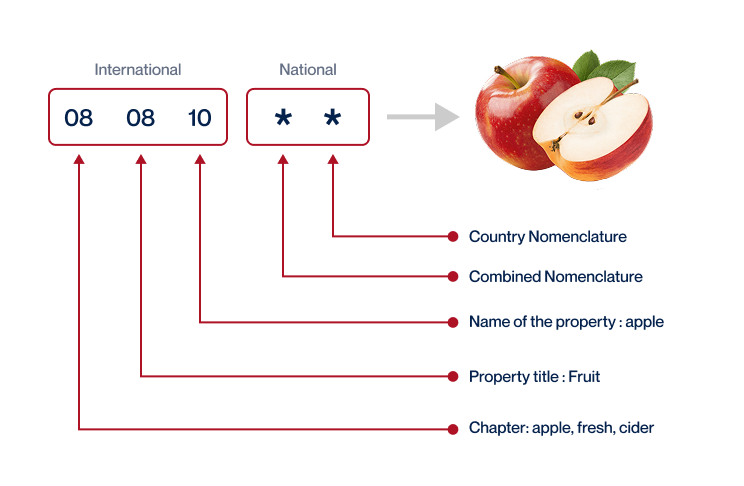
Step 3 – Calculate the Customs Value
Ever wonder why your well-priced Thailand products suddenly don’t seem as affordable once they hit Portugal’s shores? That’s because customs has its way of determining value – Welcome to the world of ‘Customs Value’. Leaving your product’s price tag behind, Customs Value takes up the baton of duty calculation. It’s not just your goods’ cost, it’s their Cost, Insurance, and Freight (CIF) value. It’s like getting the ticket price plus the miles you fled with your luggage and all those bumpy rides; in short, it’s your goods’ price, plus their international shipping cost, plus their insurance cost – all blended in USD.
To paint a clearer picture, let’s say you bought a craft piece for $100 (USD), paid $20 for shipping, and $10 for insurance. Instead of the $100 initial value, your custom value stands at a rounded $130. This is the magic of CIF Value! It’s inevitable, and knowing it’s coming can ease your way around duties. It’s all part of the process, becoming an international trader!
Step 4 – Figure out the applicable Import Tariff
An import tariff is essentially a tax imposed on goods that are imported into a country. Portugal, being a member of the European Union, uses the Common Customs Tariff (CCT) which sets the duty rates for goods imported into the EU.
To determine the specific tariff for your product, navigate to the TARIC System – European Customs. Now, follow these steps:
1. Enter the previously identified Harmonized System (HS) code and Thailand as the country of origin. 2. View the duties and taxes that are applied to your product.
For instance, let’s consider an HS code of 1701, signifying raw sugar. After entering these details into the TARIC System, the tool might return a common customs duty of 5%. If the Cost, Insurance, and Freight (CIF) value for raw sugar is USD 10,000, the import duties would be USD 500 (5% of 10,000).
It’s essential to understand these costs to effectively calculate the total cost of the shipment—this includes the cost of the product, transportation, insurance, and customs duties. Familiarity with these calculations can provide a clear picture of your shipment’s cost and inform your shipping decisions.
Step 5 – Consider other Import Duties and Taxes
While calculating import costs for shipping goods from Thailand to Portugal, you’ll encounter more than just the standard tariff rate. The nature of the product and its country of origin might invite additional import duties.
Take Excise Duty, for instance. If you’re shipping alcohol or tobacco, you might be required to pay this tax, which varies according to the product. Similarly, Anti-Dumping taxes can apply if you’re bringing in goods priced lower than their normal value, to keep the market fair.
But, arguably the most crucial is the Value Added Tax (VAT). Portugal’s standard VAT rate is approximately 23% but this can change, depending on the nature of your goods. This tax is calculated as a percentage of the total value of the goods plus the cost of shipping and insurance. So, for a product worth $500 with shipping and insurance costs of $100, the VAT would be 23% of $600, i.e., $138.
Keep in mind, these are illustrative examples and the actual rates can fluctuate. It’s always best to stay updated with the latest information, ensuring you’re not caught off-guard by unexpected costs.
Step 6 – Calculate the Customs Duties
Calculating customs duties when importing goods from Thailand to Portugal involves adding up different costs, including the customs value of your shipment, VAT, and potentially, anti-dumping taxes and Excise Duty.
Consider three simple cases: In the first example, you import goods valued at $1000, with a customs duty rate of 5%. The Customs Duty in this case would be simply $10005% = $50.
In the second example, adding VAT into the mix, with a standard rate of 23% in Portugal, the total cost will now be your customs duty plus VAT which is calculated on the sum of customs value and Customs Duty: $1000 + $50 = $1050. Therefore, VAT will be $105023% = $241.5. Total charges would sum up to $291.5.
For the third example, assume an anti-dumping tax of 10% plus an excise duty of 1%. The total cost now includes these additional taxes calculated on the customs value: $100 + $23 + $10 + $10 = $143. The total charges would then tally up to $393.
These calculations can rapidly become complex and may lead to overpayment. This is where DocShipper can help. With our global customs clearance services, we’ll ensure you never pay more than you must. Reach out for a free quote in less than 24 hours to simplify your shipping and cut costs.
Does DocShipper charge customs fees?
While DocShipper, as a custom broker, handles your customs clearance in Thailand and Portugal, it doesn’t directly collect any customs duties. Keep in mind that there’s a clear difference between the customs clearance fees charged by us and the customs duties or taxes payable to the government. These taxes are charged by the government and we facilitate the procedure. To ensure transparency, we provide you with documents from the customs office evidencing what you paid. This assures you pay just the right amount – nothing more, nothing less.
Contact Details for Customs Authorities
Thailand Customs

Official name: Customs Department of the Kingdom of Thailand Official website: http://www.customs.go.th/
Portugal Customs

Official name: Autoridade Tributária e Aduaneira Official website: https://www.portaldasfinancas.gov.pt/pt/home.action
Required documents for customs clearance
Cracking the code of customs can be daunting with paperwork galore. This section demystifies key documentation like the Bill of Lading, Packing List, Certificate of Origin, and CE conformity documents. Let’s streamline your compliance and keep shipments sailing steady.
Bill of Lading
When you’re shipping goods from Thailand to Portugal, securing a Bill of Lading (BoL) is invaluable. This legal document signifies the transfer of your goods–like your Thai silk or Portuguese wine–from the carrier to the owner. Here’s a tip–consider opting for an electronic release, or ‘telex’, of your BoL. They’re faster, cannot be lost, and they reduce paper waste. If air cargo is more your style, the Air Waybill (AWB) is its aerial equivalent, offering the same benefits. Remember, ensuring all your documentation is correct goes a long way in ensuring a hassle-free customs experience, and ultimately, smoother business operations.
Packing List
When shipping goods from Thailand to Portugal, your Packing List can be a lifeline. This isn’t just a mundane list—it’s a necessity, a precise summary of your shipment. It’s your responsibility to ensure it’s accurate since it becomes the go-to guide for everyone who lays hands on your shipment, be it by sea or air. Misplace a ‘0,’ you could misinform customs and delay the delivery.
Picture this: You’re shipping ceramics—you declare 30 cartons, but you’ve actually sent 300. A customs officer spots the discrepancy, and your goods are in limbo till you resolve the confusion. So, be meticulous—avoid costly hold-ups and keep your shipping voyage smooth sailing!
Commercial Invoice
The Commercial Invoice, your logistical lifeline when shipping between Thailand and Portugal, needs to be precise. It lays out the specifics – who’s selling, who’s buying, what’s being shipped, and at what value? Ensure the information aligns perfectly with your other paperwork; inconsistencies can stall clearance at customs. Think of a Thai business shipping silk fabrics to a Portuguese company.
If the invoice value differs from the one declared on your customs declaration, delays happen. And in freight forwarding, time equals money. Keep it accurate, keep it consistent. That’s the golden rule for your Commercial Invoice – your key to hassle-free customs clearance.
Certificate of Origin
Shipping from Thailand to Portugal? Navigating customs can be a challenge. One essential document is the Certificate of Origin. This isn’t just a paper trail; it’s your golden ticket to preferential duty rates, shaving off costs to boost your bottom line. It validates where your goods are manufactured – Bangkok, Chiang Mai or someplace else. Let’s say your business crafts beautiful teak furniture in Phuket.
When shipping your work to Lisbon, your Certificate of Origin verifies its Thai roots. This could open the door to preferential rates under established trade agreements. So always make sure to mention the manufacturing country. It’s not just about compliance; it’s strategic planning that could save you bucks.
Certificate of Conformity (CE standard)
As a freight forwarder shipping from Thailand to Portugal, handling the Certificate of Conformity (CE standard) is crucial. This certificate validates that your goods adhere to the strict product safety standards of the European market. Unlike standard quality assurance, the CE mark specifically signals compliance with comprehensive health, safety and environmental protection regulations within the EU.
Don’t confuse it with US standards, which have different requirements. Importantly, it’s your golden ticket to a smoother customs clearance process, preventing unnecessary delays. So, before shipping, ensure your goods meet the CE standards by completing rigorous testing and maintaining strict quality control.
Your EORI number (Economic Operator Registration Identification)
Under the EU’s custom regulations, an EORI Number acts as your business’s unique identifier when you’re making shipments between Thailand and Portugal. Picture its role like the GPS of your goods, keeping track of your imports and exports. Getting an EORI Number is straightforward – simply register with your national custom authority (in Portugal, the Autoridade Tributária e Aduaneira).
Without it, your shipments can get delayed at customs, leading to a real headache. So, think of it like your business’s passport allowing a smoother trip for your goods between Thailand and Portugal! Make sure to keep this number handy; you’ll need it every time you fill out a customs declaration form.
Get Started with Siam Shipping
Prohibited and Restricted items when importing into Portugal
Understanding what you can and can’t ship to Portugal is crucial to avoid unexpected charges or regulatory hiccups. This quick guide clarifies importing laws, helping you dodge the headache of dealing with seized shipments. Stay ahead of prohibitions and restrictions with our support.Are there any trade agreements between Thailand and Portugal
As of 2024, there are no specific new trade agreements between Thailand and Portugal. However, the two countries maintain a robust trade relationship within the framework of existing agreements and international trade norms. Historically, both nations have signed several treaties and agreements to bolster economic and diplomatic relations, including the Treaty of Friendship, Commerce, and Navigation dating back to 1820 and subsequent agreements in the late 19th and 20th centuries.
Thailand’s recent focus has been on finalizing free trade agreements with other regions, including the European Free Trade Association (EFTA), which might indirectly impact trade dynamics with Portugal
Thailand – Portugal trade and economic relationship
In 2024, the economic and trade relationship between Thailand and Portugal continues to be strong and multifaceted. The two countries have a long history of diplomatic and economic cooperation dating back to the early 19th century. Modern trade between Thailand and Portugal involves various goods and services, with notable exports from Portugal including motor vehicles, cellulose fiber papers, and animal meal, while Thailand exports air pumps, printed circuit boards, and rubber tires to Portugal.
In terms of recent developments, both countries have been working to enhance their partnership in various areas, including cultural exchanges and educational cooperation. In January 2024, the Thai ambassador to Portugal and Portuguese officials discussed initiatives to promote Portuguese language teaching in Thai universities and strengthen cultural ties. This is part of a broader effort to foster South-South and triangular cooperation, particularly involving expertise sharing with countries like Timor-Leste .
Overall, the bilateral relationship between Thailand and Portugal in 2024 is characterized by steady economic exchanges and growing cultural and educational collaborations, reflecting a mutual interest in deepening ties across multiple sectors.
Your first steps with Siam Shipping
Additional logistics services
Warehousing
Finding the right warehousing solution can be tricky. You need reliable storage, possibly with temperature control for sensitive goods like wines or pharmaceuticals. We get it and we’ve got an array of solutions for you.
Packing
When shipping goods from Thailand to Portugal, appropriate packaging and repackaging are paramount as these contribute to the safe, efficient, and cost-effective delivery of your products. With a trustworthy agent, this process becomes more manageable. For instance, if you're shipping fragile glassware, we ensure it's carefully packed with bubble wrap or foam and put in a durable box to withstand the journey. Products like clothing might require vacuum sealing for space efficiency. For more detail on packaging best practices, click here: Freight packaging

Transport Insurance
Cargo insurance, quite unlike fire insurance, is your safeguard against unpredictable events during transit. The former is a preventive measure specifically designed to mitigate risks caused by accidents or damages while shipping goods, no matter the distance. Imagine your container ship caught in a violent storm or an unexpected warehouse fire damaging your goods – these scenarios underline the importance of such insurance. Diving deeper into this subject, you can find more on our dedicated page: Cargo Insurance.
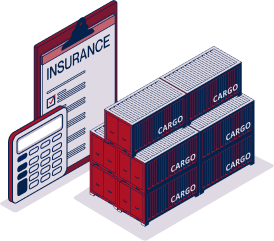
Household goods shipping
Moving from Thailand to Portugal with bulky or delicate items? Our Personal Effects Shipping is tailored for exactly this, ensuring your goods are expertly handled for optimum protection during transit. For instance, our team helped transport a family heirloom piano from Bangkok to Lisbon without a scratch! More info on our dedicated page: Shipping Personal Belongings
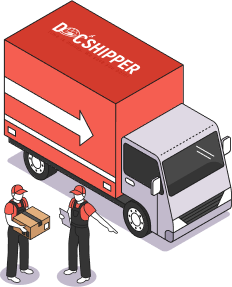
Procurement in Thailand
Moving products between Thailand and Portugal and stumped by sourcing? DocShipper boosts your business by finding top-notch suppliers in Asia, East Europe, and beyond, managing your procurement process from A to Z. Say goodbye to language hurdles as we stand as your guide. To illustrate, we might unearth a stellar Thai silk supplier for your Portuguese textile business. Intrigued? Discover more on our dedicated page: Sourcing services

Quality Control
Attention to quality inspection is vital in your shipping journey from Thailand to Portugal. Imagine sending a cargo of beautifully handcrafted wooden furniture only to discover cracks on arrival. By ensuring each piece is meticulously inspected during manufacture, we safeguard your business against faulty goods, maintaining your reputation. Experience the peace of mind that comes with vetted quality. More info on our dedicated page: Quality Inspection.
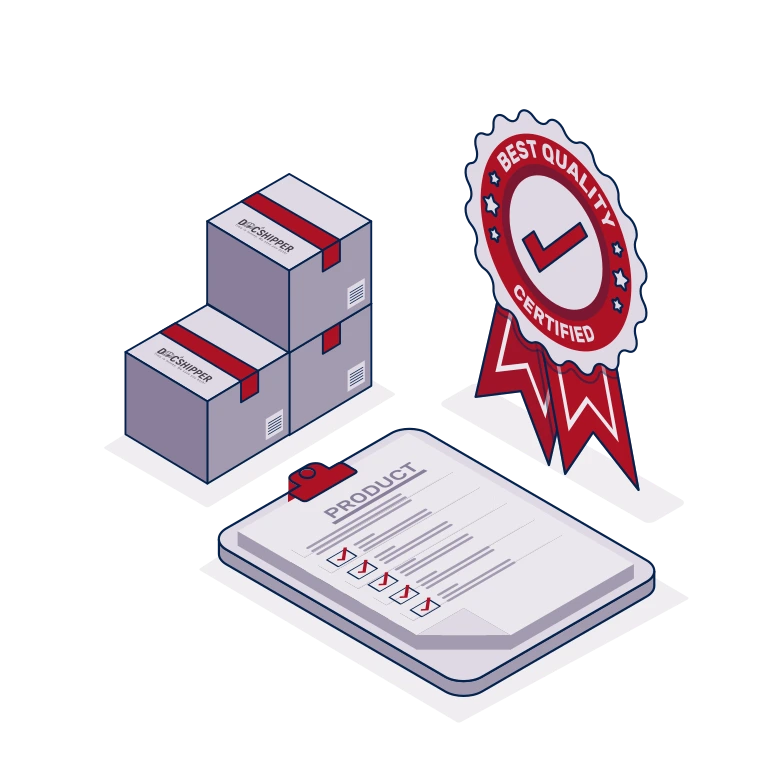
Conformité des produits aux normes
Ensuring your product ticks all regulatory boxes is critical when shipping overseas. Our Product Compliance Services offer lab testing for your goods, ensuring they meet destination-specific standards. Think of us as your safeguard, mitigating future problems by obtaining necessary certifications beforehand. Steer clear of potential roadblocks; entrust us with your compliance testing. Want to uncover the specifics? Find more about this service on our dedicated page: Product compliance services.





